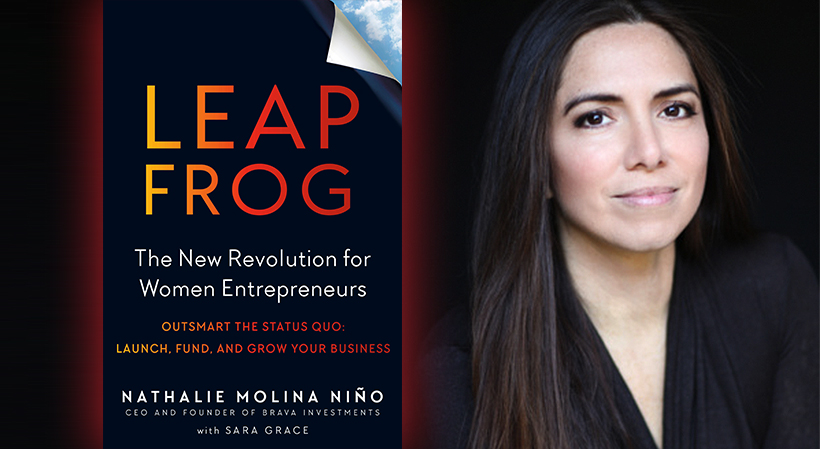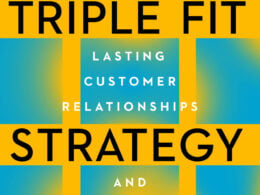The following is excerpted from “Leapfrog: The New Revolution for Women Entrepreneurs” by Nathalie Molina Niño with Sara Grace, published by TarcherPerigee, an imprint of Penguin Publishing Group, a division of Penguin Random House, LLC. Copyright © 2018 by Nathalie Molina Niño LLC.
Hack 35: Win the crowd
Crowdfunding—all types—seems to be the one area in which women are more successful at raising money than men. Two Wharton professors looking at 1,250 Kickstarter campaigns found that women were 13 percent more likely to meet their goals. And CircleUp, an equity crowdfunding platform focused on retail and consumer products, reported that in 2015, women on the site took 34 percent of the capital but were 32 percent of the total applicants for funding.
Crowdfunding has grown to mean a few different things. First, there was only rewards-based crowdfunding, like Kickstarter, where “the crowd” is donating rather than investing, often in exchange for some perk. For example, early access to the product or a discounted price. But there’s another option for cash-strapped entrepreneurs: equity crowdfunding. It became legal in the United States in 2016, when President Obama signed the Jumpstart Our Business Startups (JOBS) Act. For a fee, equity crowdfunding platforms connect startups with individual and sometimes institutional investors who pool their money to fund them. Sometimes they do this in exchange for equity, but more often, they get their loan repaid with interest. (Technically this is called debt crowdfunding, but it is readily available on equity platforms).
Another great thing about crowdfunding is that you set the terms, and they’re likely to be a lot better than what an angel or seed investor has to offer. Emily Best is an expert. She’s the founder of Seed&Spark, a crowdfunding site for film entrepreneurs that has the highest campaign success rate in the world. Even better, she funded her business with the help of two crowdfunding campaigns. She tried traditional fundraising, pitching to a VC that she considered her “dream investor,” but when the offer came in, her lawyer told her they were the worst terms he’d ever seen. “This is not a term sheet you counter,” he told her. “This is a term sheet you go say, ‘Go eff yourself.”‘ So she turned her back on venture and took her pitch to Crowdfunder, an equity crowdfunding site, where she set her own terms. Instead of trading equity for cash, she went after debt. Soon she had investors everywhere from the United Arab Emirates to New Zealand writing her $30,000 checks.
Related: How to Make a Killer Crowdfunding Campaign Video
Here are four of Emily’s best tips for successful campaigning:
- Answer the following four questions. In any pitch, you have to be able to answer: Why me? Why this? Why now? And why you? Answer those four questions with as cleverly and well told a story as possible and you’ll have investors banging down the door. This applies to all kinds of crowdfunding.
- Crowd comes before fund. Too many crowdfunders mistakenly think that they’ll build the audience while they raise the money. Invest time in building your crowd online before you ask them for funding, sharing great content and bringing them under the tent of what you’re up to. Otherwise what you’re attempting is a de facto friends and family push, which will limit your raise. How much lead time? “That depends on how much you’re raising and how sticky your idea is,” says Emily. “But typically speaking, three to six months if you’re going to raise in the $25,000 to $50,000 range in a very, very concerted effort.”
- You can crowdfund more than once. Don’t make the mistake of thinking this is a “one and done” approach. You might crowdfund several times as your business approaches different milestones. Emily’s first campaign raised $33,000. The second, which was the debt campaign, came a couple of years later and raised $500,000.
- Stand for something. Something remarkable happened at Seed&Spark that demonstrates the power of knowing and sharing company values. Filmmakers work in an industry almost as notorious as technology for shutting out women and men of color, and Emily has always believed that crowdfunding could help them create new opportunities. After the 2016 presidential election, she decided to create #100Days ofDiversity, a campaign in which filmmakers on the platform made statements about how their project would increase diversity and inclusion in the industry, whether in front of the camera or behind it. Campaigns on Seed&Spark already had an amazing 75 percent success rate in achieving funding goals. Now, that rate shot up to 85 percent, and was holding steady at 80 percent (more than double their nearest competitor) when this book went to print.
She’s clear on what’s behind that boost: “We asked the filmmakers to stand for something—to think about what’s important about their film beyond the film itself and to communicate that clearly to the audience. It was only going to be for 100 days,” says Emily, “but this is who we are now. So it’s forever.”
Microhack: Become a crowdfunding expert
Someone could write a book of hacks just on how to run a crowdfunding campaign. Fortunately, the major crowdfunding sites have created content to help you be successful—for example, IFundWomen.com has created a series of downloadables to coach you through every stage. Also spend time browsing campaigns that got fully funded—or, even better, any you have donated to. What was it that you watched, heard, and read that moved you to action?
Hack 36: Get the traction you need, not the traction they want
Crowfunding isn’t merely a source of capital. It’s a powerful way to show potential investors that you’ve got traction, which can be even more valuable than the dollars you raise from the campaign itself. A small amount raised from an enthusiastic crowd could help open the door to a much bigger round of funding.
So what is traction, exactly? Traction is quantifiable evidence that there’s interest in and a market for your business. Winning a grant, receiving a loan, or being accepted into an accelerator are all early-stage forms of traction, as is the notorious “friends and family” round. But the most compelling traction (other than profitability) is enthusiastic customers—a growing number of people who are buying your product and telling others to do the same. Thus, crowdfunding is a genius leapfrog because you can rack up customers (and brand ambassadors, happily urging others to contribute) before you even have a product.
“If you have a business that’s expensive to build but you have a bunch of customers champing at the bit to buy it once it’s ready, well, that’s something that you can take to investors that is irrefutable,” says Emily Best. “Women and people of color will always be expected to have more traction than our mostly white, mostly male counterparts.”
A successful crowdfunding campaign, then, is a traction tracker as much as a fundraising platform. The amount you raised, the number of donors, the number of hits your page got, the campaign’s momentum—all these help an investor unfamiliar with your product or space to understand that the demand is there.
Traction should be as important to you as it is to investors. It’s a way of checking your personal feelings about your business against cold data from the market. But if you’re going to put your trust in metrics, they better be the right ones! Avoid the mistake of thinking that some investor, however deep-pocketed and successful, will be a better judge than you.
The terrific Christina Wallace, one of Mashable’s “44 Female Founders Every Entrepreneur Should Know,” has a textbook story to explain the danger of letting an outsider dictate your metrics. (Literally textbook: it was written up as a case study at Harvard Business School.) Christina’s first startup, an online store that made custom-fit professional wear for women, crashed and burned eighteen months after its 2011 launch. She had built it with a friend a year after graduating from Harvard Business School (on scholarship; they do exist) and took funding from an investor who knew nothing about online retail. All he knew was that he wanted to invest in the internet and that the one-size-fits-all metric was growth in impressions—the number of people who visited their site.
Sign Up: Receive the StartupNation newsletter!
Investor Man wrote impressions into Christina’s term sheet (that’s the agreement that sets the conditions for an investment) as a key performance metric; she had to grow that number to continue getting his money. So quite naturally, impressions became Christina’s most important barometer, and her top goal was increasing traffic to the site. Meanwhile, she lost sight of something more critical in the long run: turning visitors into buyers, which is called conversions in sales jargon. There were other challenges with her business model, no doubt. But being hyperfocused on what was essentially a vanity metric cost her many opportunities to dig in and work on the real problems that needed solving. She satisfied her term sheet, but without creating enough meaningful revenue to move forward and garner more legitimate forms of traction.
So before you face the fundraising gauntlet, define traction for yourself so that you walk into every conversation with a strong, well-considered position on the metrics that matter and why. Assemble the data and create visuals that make it easy to see how you’ve grown that metric so far and where you can expect it to go in the near future.
“Leapfrog” is available now at fine booksellers and can be purchased via StartupNation.com.






